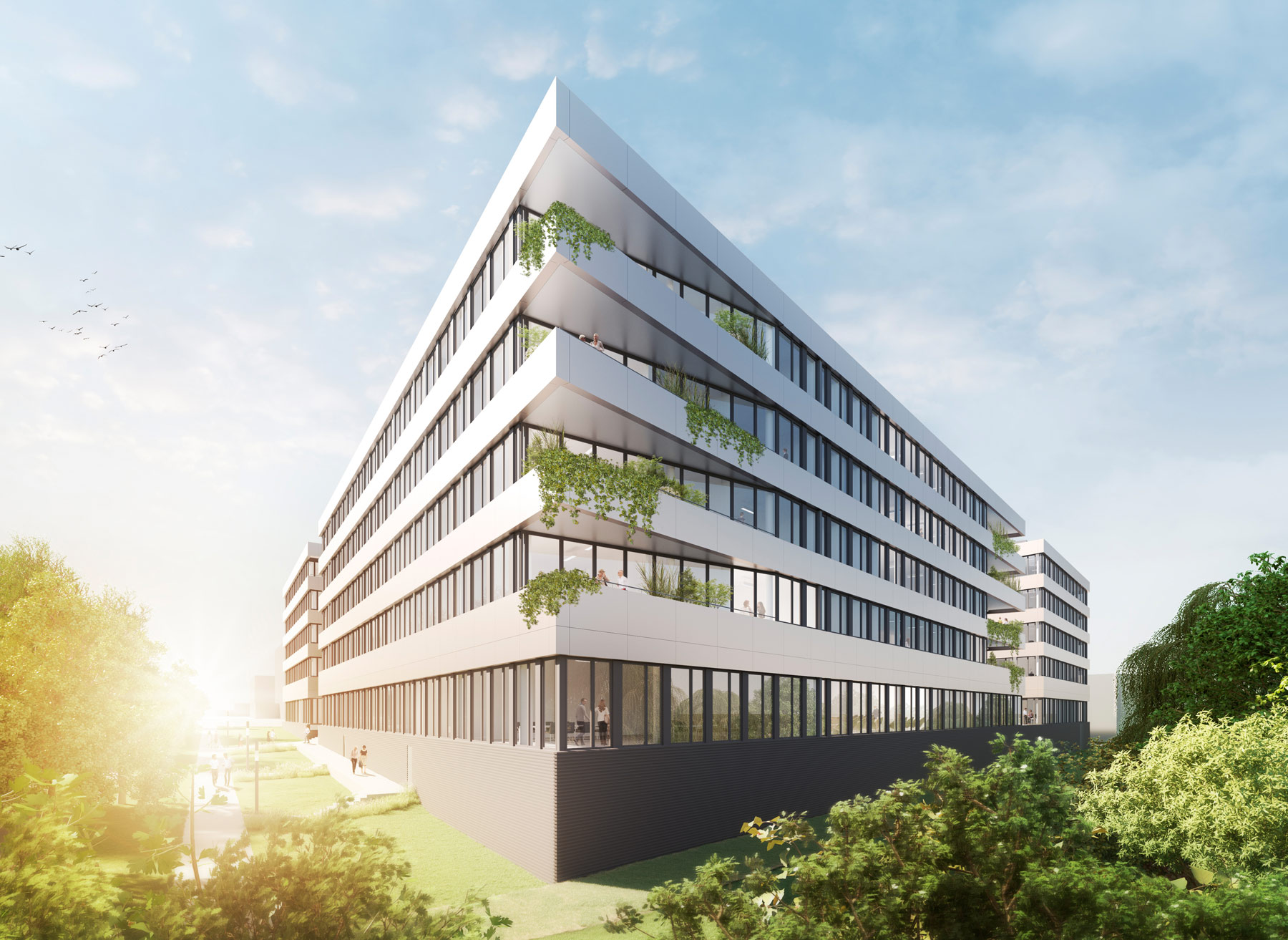Construction Method for suspended rear ventilated rainscreen facades vhF
A structural requirement is a statically supporting outer wall into which the substructure is anchored. The substructure – usually made of aluminium – is composed of wall brackets and carrier profiles. Depending on the intended means of fixing for the cladding elements, additional horizontal or vertical profiles can be inserted. The wall brackets are usually thermally divided from the outer wall, so that thermal bridging losses caused by the construction can be calculated and reduced to a minimum.
A significant functional characteristic of the substructure is the formation of fixed and sliding points. Fixed points take up the structural loads and the proportional forces from wind uplift and wind pressure loads. The role of the sliding points is to carry the wind uplift forces and wind impact forces away.
The substructure can be adjusted in three dimensions. In this way vertical and horizontal, tension-free positioning on the outer wall can be ensured. Unevenness and dimensional tolerances as well as thermal and hygroscopic loads are reliably balanced.
The depth (protrusion) of the substructures is governed by the cross-section of the rear ventilation space required and the thickness of the insulation selected. The façade cladding is fixed to the substructure. Depending on the architectural requirements for this we differentiate between visible and covered (or ’secret‘) fixings. The decisive factor for the dimensions of façade claddings and their fixings are the general construction supervision approvals from the manufacturer or standards and norms which refer to building materials.


